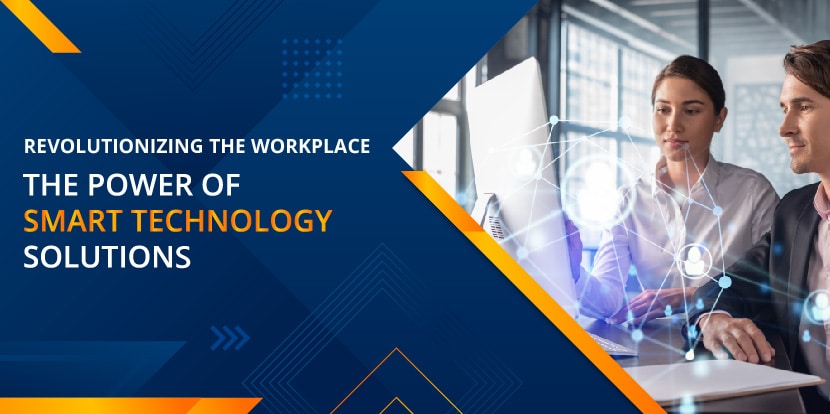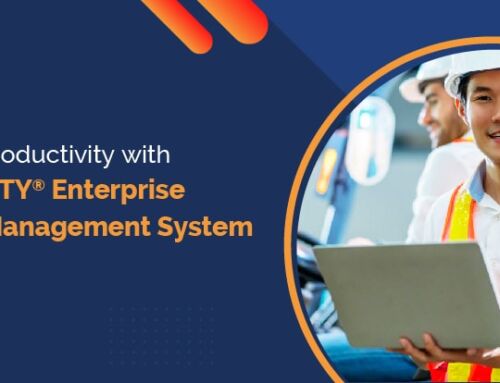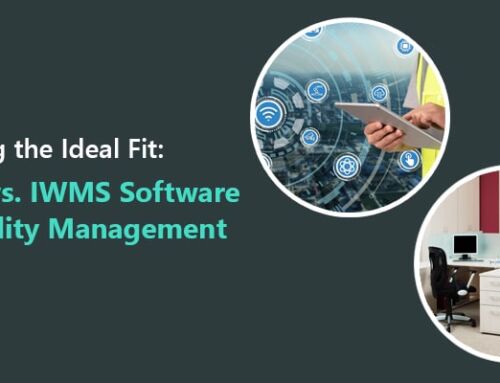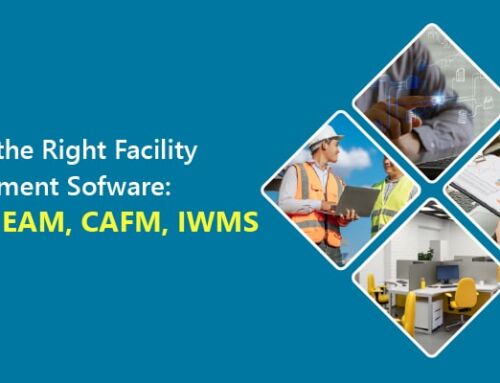Technology is inherent to any growing business. Smart technologies apply to any sector, and companies adopt them to drive change. Thinking of Smart Technology at the workplace, what comes to mind is hands-free applications, automation driven by sensors, and AI replacing regular processes.
Smart workplace technology is evolving fast, and it is challenging to define it as it is a continuous process. This blog dwells on the changes brought in by technological advances to make workplaces smarter.
What is meant by a Smart Workplace?
A smart workplace uses technology, services, and solutions to help people be more productive by working faster and smarter. Research studies indicate a link between smart technology, learning, and performance. Moreover, it increases corporate trust, and efficacy, and nurtures the well-being of employees.
Smart technology offers solutions that use IoT, cutting-edge software, and other such solutions to help with building management like:
- Building Design and Construction
- Smart Energy Management
- Heating, Ventilation, and Air Conditioning (HVAC) Systems
- Lighting and Fixtures
- Predictive Maintenance
- Security
The above are the essential elements required for the smooth functioning of a facility. However, with COVID creating the need for a hybrid work environment, smart workplaces are transforming.
The focus is on employee experience and well-being, for which the following are essential:
- Employee-friendly Apps
- Hotdesking
- Conference Room Solutions
Let’s now take a closer look at how smart technology helps deploy these applications for optimal results.
Building Design and Construction
The utilization of Smart Technology in building construction often includes the integration of Building Information Modeling (BIM). BIM, a combination of 3D modeling and software, fosters collaboration among experts during the building’s design, construction, and maintenance phases. Smart technology plays a pivotal role in constructing superior buildings, commencing from the initial design stage and employing predictive analytics for ongoing maintenance.
One noteworthy example is eFACiLiTY® IWMS/CAFM, which assumes a crucial role in linking BIM data to the Facility Management (FM) phase post-construction. It empowers facility managers to plan, prioritize, and execute FM-related tasks effectively, facilitating clear decision-making regarding maintenance, space utilization, floor planning, modifications, building renovations, and more throughout the building’s lifecycle.
Smart Energy Management
With carbon emission levels increasing alarmingly, most organizations are under pressure to reduce emission levels to attain sustainability goals. However, they need to ensure that costs are under control. Keeping track of how much an organization spends on utilities in several buildings is challenging. Also, organizations need to implement strategies that help decrease their carbon footprint. An efficient energy management system and environmental sustainability management software will help to accurately calculate emissions by integrating GHG protocol to track and minimize GHG emissions at all levels. It also helps reduce waste sent to landfills by regulating waste management processes while ensuring compliance with environmental sustainability requirements.
Heating, Ventilation, and Air Conditioning (HVAC) Systems
Workplaces can, at times, become uncomfortably hot or cold. Adverse environmental factors can compound the issue, making employees feel uncomfortable. It may appear very trivial from a general point of view, but research studies indicate that a two-hour closed-door meeting can leave employees exhausted and make impaired decisions – the culprit being higher levels of carbon dioxide that accumulate in the indoor atmosphere. Providing your employees with a health and well-being app ensures they monitor the air they breathe, allowing them to take preventive to remain healthy and productive.
Lighting and Fixtures
Smart lighting systems help save on energy bills by using Internet of Things (IoT) sensors for adjusting lighting depending on occupancy, weather, time of day, and seasonal climatic changes. Lighting can be adjusted for specific tasks.
For example, eFACiLiTY® Smart Building Controls enhances the services provided in a building, helps save energy costs, and ensures occupants’ comfort and safety. Occupants can operate and schedule their individually used workplace lighting, air conditioners, window blinds, etc., through their smartphones.
Predictive Maintenance
Regularly scheduled preventive maintenance is essential for avoiding equipment downtime, reducing repair costs, and extending the life of assets. However, using smart workplace technology takes asset management to a new level for facility managers.
Through predictive maintenance, smart workplace technology harnesses the power of IoT sensors to monitor asset utilization and identify potential equipment failures. These IoT sensors track conditions like temperature, friction, and vibration, which can indicate impending breakdowns. By integrating these sensors with facility maintenance software, facility managers get real-time asset utilization data. This data empowers them to make informed maintenance decisions and proactively prevent unexpected asset failures.
Preventive maintenance is effective, and integrating smart workplace technology and predictive maintenance allows facility managers to manage their buildings and assets with unparalleled precision and efficiency.
Security
Smart technology offers solutions for common security challenges, ensuring the protection of valuable assets, including employees, for organizations.
One example of this is smart workplace technology, such as smart badging systems, which allow facility managers to control access to an entire building or specific areas within it. By implementing badge systems, employees can be guarded against unwelcome and potentially dangerous visitors, while the company is protected from both internal and external security breaches.
In areas that require precise environmental control, the utilization of IoT sensors becomes crucial. These sensors are capable of detecting variations in temperature or humidity that may cause damage to equipment. Additionally, they can identify motion or the presence of unauthorized individuals. By integrating these smart sensors with workplace management software, important personnel can be promptly notified, enabling them to take appropriate action.
Moreover, as organizations become more concerned with wellness checks and contact tracing, touchless visitor management systems are being implemented. These systems enable visitors to complete a straightforward questionnaire, scan a QR code, and directly notify their host without waiting in a busy lobby.
Overall, smart technology presents a comprehensive approach to address security concerns and safeguard the safety and well-being of employees, while also protecting essential organizational assets.
Employee-Friendly Apps
As organizations embrace the hybrid workplace model and abandon traditional assigned seating arrangements, communication between employees becomes increasingly difficult. A perfect solution is available through mobile apps, which have become indispensable and increasingly popular in this new environment.
These apps offer a seamless solution for employees to effortlessly locate individuals, places, and important information within a smart workplace. By providing location-based maps, announcements, menus, and various other features, these apps enable employees to feel connected to the office environment, irrespective of their physical presence daily.
Hotdesking
The COVID-19 pandemic brought about a significant shift in how people work, with companies across the globe quickly transitioning to remote work environments. Since these changes occurred, the world has slowly adapted to this new normal. Although the threat of COVID-19 has receded, the lessons and possibilities discovered by organizations about their workforce are likely to endure.
Even before the pandemic, surveys revealed that nearly 80% of the workforce desired the ability to work from home. It is plausible that, even as conditions stabilize, employees will become proficient in operating in a hybrid work mode. This approach would let staff work from the office or their homes, according to their convenience and within defined productivity levels. Employees can work from home when they prefer and visit the office for specific purposes at other times. Offices may no longer need to accommodate the presence of all employees at once, and hotdesking software will make it easier for employees to choose their workspaces on the days they work from the office.
Conference Room Solutions
Sensors offer a solution to the issue of “false scarcity” in conference rooms or desks. It occurs when an employee reserves a space but later cancels the meeting or decides not to come into the office. By integrating sensors with reservation software, a workflow can be created to automatically cancel a reservation if there is no activity within a specific timeframe.
Furthermore, intelligent room panels seamlessly integrate with conference room scheduling software, simplify reserving space, and facilitate impromptu collaborations.
Conclusion
In the prevailing changing work landscape, employees expect a flexible and comfortable work setting, mirroring the comforts of their home office. It includes well-maintained building systems and technology that fosters seamless collaboration.
To meet these expectations, employees desire a workplace that offers convenient amenities such as ample parking, secure storage, easy access to colleagues, reservation systems for rooms or desks, and the ability to request services or amenities on demand.
However, creating such an efficient workspace is no easy task. It requires careful evaluation of existing workplace technology and the identification of new solutions that will best serve the needs of employees and the larger objectives of the business.
To learn more about eFACiLiTY®, schedule a demo with us.





